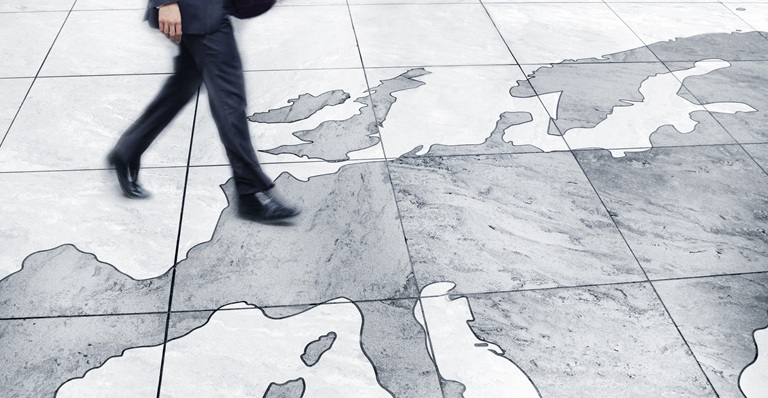Are the 2000s shaping up to be the millennium of tail risks? The 9/11 terrorist attacks, a near-collapse of the global financial system, a resurgence of populism in developed economies, a pandemic-induced shutdown of global industry, war in Europe. And we’re only getting started.
Despite our much-touted increase in sophistication, the capacity for the global economy to be thrown off course by seemingly unanticipated shocks appears to have remained intact. But while some determinative events can legitimately be cast as unexpected, perhaps others deserve closer scrutiny. Afterall, even the pivotal assassination of Austrian Archduke Franz Ferdinand in 1914, which provided the spark that ignited the First World War, occurred alongside an escalating arms race, growing nationalism, heightened imperialism, the budding militarism of Imperial Germany and an increasingly entrenched alliance system.
The so-called peace dividend that resulted from the end of the Cold War, along with confidence in the ability of policy-makers to smooth economic cycles, entrenched a belief that shocks would subsequently be quick and shallow. Perhaps further contributing to our complacency was the somewhat naive interpretation of the efficient markets’ hypothesis, that asset prices incorporate all relevant and accessible information, as well as rational expectations theory, that economic actors make choices according to such information. However accurately or not these principles reflect the real world, their growing acceptance led many to believe that markets were better insulated than they truly are.
While the root causes of the U.S. attacks on Sept. 11, 2001, remain the subject of contentious debate, hindsight can't ignore the effects of the Iranian Revolution, the repercussions of the Soviet invasion of Afghanistan, American foreign policy in the Middle East, demographic changes throughout the Arab world and the proliferation of information technology.
You should also check out
EDC interactive tool offers economic insights on Canada’s Top 75 trading partners.
In the wake of the 2001 recession in the U.S., lax underwriting standards, regulation, and oversight led to predatory lending, high mortgage approval rates, financial engineering, and reckless risk-taking by financial firms eagerly searching for yield. Add to that the abundance of credit, and U.S. government policies encouraging home ownership, and the groundwork was laid for the 2008 global financial crisis.
Fast forward to October 2016, and manufacturing jobs in the U.S. are down 29% compared with 2000, with one-third of those losses happening since the global financial crisis. Meanwhile, the income of the top decile had jumped 8% from before the financial crisis, compared to a 10% decline in income for the bottom half.
Additionally, stock markets more than regained all their losses (and then some) thanks, in part, to bank bailouts and accommodative monetary policy, helping to make the wealthy even wealthier.
At the same time, the prices of key commodities (including agricultural, but especially energy) were responding to global structural changes and forcing a rethink of industries, which had traditionally been large employers in the U.S. Add to that demographic changes, a legacy of racial frictions that had never been fully reconciled, and a pandemic that only further exacerbated tensions and inequalities, and you begin to uncover the foundation behind an explosion in populist policy support in the U.S. Perpetually weak growth and fragmented immigration policies in Europe help explain the crashing of the populist wave across the Atlantic.
While microbiologists had long flagged risks posed by the transmission of animal pathogens to humans, the precise route of such infections was, by nature, unpredictable. Somewhat more visible to the naked eye was the steady erosion of international co-operation in an increasingly nonpolar world, which made any co-ordinated response to a global pandemic difficult, if not impossible.
More recently, on Feb. 24, 2022, after almost 77 years of relative peace and security in Europe, the Russian forces of President Vladimir Putin breached the sovereign territory of Ukraine, launching a military incursion into the Eastern European country. While the scale and brutality of the invasion continues to surprise even the most seasoned of observers, that President Putin invaded ranks among the most telegraphed wars in history. Putin, who served in the Soviet-era KGB, openly lamented the collapse of the Soviet Union as a “major humanitarian tragedy,” never making secret his ambitions over what he considers the “ancient Russian lands.”
The bottom line?
Tail events will happen. But, for the most part, the triggers of instability are in plain sight. We just need to pay more attention to our peripheral vision.
What do today’s policy responses to the pandemic, together with other macro trends such as urbanization, global demographic swings, rising inequalities, technological disruption, climate change, surging food prices, and an increasing polarization of the global system tell us about the tail risks of tomorrow?
As always, at EDC Economics, we value your feedback. If you have ideas for topics that you would like us to explore, please email us at Economics@edc.ca and we’ll do our best to cover them.
This commentary is presented for informational purposes only. It’s not intended to be a comprehensive or detailed statement on any subject and no representations or warranties, express or implied, are made as to its accuracy, timeliness or completeness. Nothing in this commentary is intended to provide financial, legal, accounting or tax advice nor should it be relied upon. EDC nor the author is liable whatsoever for any loss or damage caused by, or resulting from, any use of or any inaccuracies, errors or omissions in the information provided.







